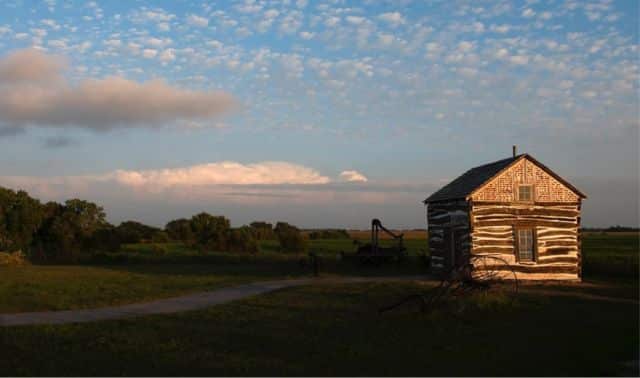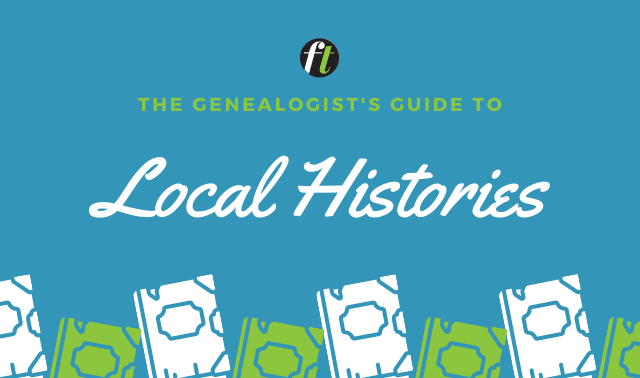“Hi, Lisa. I was getting rid of some things and I was going to shred the enclosed, but I thought maybe you’d be interested in them. If you don’t want them, shred them.”
I received this note from my cousin Mike in 2000. Enclosed with it was my grandmother’s death certificate, the deed to my grandparents’ house and a copy of a visa application dated 1928 for one of my paternal ancestors. I immediately called to thank him. He didn’t realize that he just saved me hours of valuable research time by sharing with me these precious items he had stashed away at home.
Many genealogists have stories of precious family records rescued from the shredder, trash heap or some other near demise. Often it’s our own fault—we fail to ask our parents or grandparents the important questions about our family background. Other times, the impulse to purge may result in Grandpa’s passport being tossed in the trash, photo albums showing up at a flea market, or the family Bible being auctioned on
eBay. Worse yet are the situations beyond our control: records destroyed by fires, floods, wars or human error.
Don’t wait for serendipity to intervene. Cull these six sources for ancestral information now—before it’s too late.
1. Family stories
We’ve all heard the saying, “Genealogy begins at home.” But you don’t fully appreciate this statement until you experience the near-obliteration of tangible connections to your past—such as those documents from my cousin. If you’re lucky enough to have older relatives to interview, don’t wait until they’re gone to seek information about them. Print the online article “
13 Tips for Oral History Interviewing” and sit down for a face-to-face chat. If your relatives live far away, at least call them on the telephone; if they’re computer-savvy, try to connect with them via
Skype video chat (it’s free when you connect computer to computer).
If the previous generation is no longer around, reach out to their children or grandchildren. Ask them if they have any photographs or documents. Whether or not they’re willing to share is another story, but it doesn’t hurt to ask. The same cousin who sent me the documents also had my grandparents’ wedding photograph, but I had to ask him for a copy (he’d assumed I already had one).
2. Vital records
Birth, marriage and death records give us the names, dates and places for the milestones in our ancestors’ lives, but tracking them down isn’t always easy because access varies from state to state. Additionally, concerns over privacy and identity theft threaten the availability of these records to genealogists:
Ever-changing laws regarding information access mandated by state legislatures, as well as increasing fees associated with obtaining vital records, can endanger your quest for information. Acting sooner rather than later is one way to ensure you’ll get the data you desire.
A major key to success in obtaining vital records is learning the year when state-level vital-record-keeping began in each US state—that’s when counties had to collect birth, marriage and death information, and report it to state offices. You’ll find these dates in
Family Tree Magazine’s Vital Records Chart. Some counties or towns kept stats earlier, and some were slow to comply with state laws, so check with your ancestors’ local government offices for record availability. See <
www.cdc.gov/nchs/w2w.htm> to get state-by-state contact information for requesting US records. The
Vitalrec website links you to fee-based and free sources for vital records.
As we’ve mentioned, some states restrict access more than others. For example, New Jersey law restricts the release of vital records—meaning vital records aren’t open to the public and you can’t search them online. But some older records (June 1878 to 1900) have been transferred to the Division of Archives. Some vital records from 1901 to 1940 are on microfilm and available to genealogists—check with the state archives and run a place search of the Family History Library (FHL) catalog. If the state doesn’t have records you need, contact vital records offices in the city or county where the event occurred.
Some states, such as California and Illinois, have started to issue uncertified copies or informational copies of vital records. These are stamped as “not valid for identification” and may not carry as many restrictions for the requestor.
The disparity among states in vital records searching gets even trickier if you’re hoping for online indexes or images. If your ancestors were born or died in Arizona, you can search the
Arizona Department of Health Services site for birth certificates (1855 to 1933) and death records (1844 to 1958), and even view PDFs of the original documents. You can search indexes and images for certain states on the
FamilySearch Record Search Pilot Site. Records include Ohio deaths (1908 to 1953) and Delaware births (1861 to 1908), among others.
But if you’re looking for Pennsylvania vital records online you’re not likely to have the same luck. Check Family Tree Magazine’s “10 Best Websites for Vital Records” and other helpful online guides such as Online Searchable Death Indexes and Records and Online Birth and Marriage Records Indexes for the USA for help.
3. Church records
Genealogists frequently turn to church records—such as baptisms, burials and marriages—to fill in the gaps when the civil equivalents aren’t available. In addition, churches have other useful documents that mention your ancestors, including member lists, tithing records, congregational histories, meeting minutes, anniversary booklets, published newspapers, or even records pertaining to church-run orphanages or schools.
The availability of church records for your ancestor depends on many factors: which faith they practiced, where they worshipped, whether the church still has an active congregation, and whether any privacy restrictions have been imposed by the diocese or governing body.
Availability of some records is threatened when churches merge or close. Ethnic parishes in large cities seem to be especially vulnerable to closing or merging, as descendants of the immigrants who built them stop attending, switch parishes or faiths, or move away. Two examples are in Buffalo, NY, where 77 parishes have closed between 2005 and 2008, and Cleveland, Ohio, where the Cleveland Roman Catholic diocese has mandated nearly 50 closures and mergers by July 2010.
Cleveland native John Sabol, co-author of the books Cleveland Czechs and Cleveland Slovaks (Arcadia Publishing), reflects on the historic significance of these ethnic parishes: “These churches are a reminder of two things that were extremely important to immigrants at the turn of the 20th century: their religion and their language. As European and other immigrants assimilated into the American fabric, language became less important, and these parishes lost their hold as their congregations moved on to get a larger piece of the American dream.”
When a church closes, its records may be transferred to the diocese or main repository for the denomination you’re researching. See our
online directory of church records resources to find archives for several major religious groups.
Even when the church still exists and records are available, it doesn’t mean you actually will get to view them. The current priest or minister will decide whether or not you’ll have access to the registers of a particular parish, or be permitted to receive photocopies of certain records. Sometimes the clergy have valid reasons for declining your request (protecting a person’s privacy, for example). But often, you can help your cause if you prove a long-standing affiliation with the parish.
When submitting requests, try to provide as much information as possible (names, dates) to make it easier for the priest or the parish assistant to find your family. It’s also a good idea to keep requests to one or two records at a time. If making your request by mail, offer to pay for the photocopies and postage, and where appropriate, consider giving a small donation to the church in memory of your ancestors. Always follow up with a thank-you note.
With all of these new obstacles and rules, if you wait too long to investigate religious records for your ancestors, you may be left praying for divine intervention to get what you need. Turn to page 46 for an in-depth guide to church records research.
4. Funeral home records
When you can’t locate a death record for an ancestor, sometimes the local funeral parlor can fill in the blanks. As the 20th century progressed, more and more visitations took place in funeral homes rather than private residences. The funeral home that hosted services for your ancestor might still have files with information about his passing. Because these are private institutions, their records’ content will vary depending on the funeral home and the time period. But their files might include copies of the death certificate, obituary and burial permit; body preparation instructions; an invoice; immediate family members’ and/or pallbearers’ names; and a list of newspapers that published the obituary.
Be aware that a funeral home’s first obligation isn’t to genealogists. Staff generally try to protect the family’s privacy, so you may have to prove you’re a descendant. A funeral home also has the right to restrict or deny access. To locate funeral homes, go to <
www.funeralnet.com> and type in the locality where your ancestors died. You also can check the
American Blue Book of Funeral Directors (Kate-Boylston Publications),
The National Yellow Book of Funeral Directors (Nomis Publications) and
The Red Book National Directory of Morticians (National Directory of Morticians). Your local library’s reference section might have one of these directories, or you can ask your local funeral home.
If you find the funeral home you’re looking for but it’s gone out of business, run a
Google search of the home’s name to see if another funeral director may have purchased it. If not, try a place search of the FHL catalog and look for funeral records or businesses. Finally, check with local and state historical societies and libraries. At one time, my hometown of Duquesne, Pa., had several funeral homes, but many have closed. Fortunately, the local historical society copied records of the funeral home that handled my grandparents’ burials. But when I’ve inquired about records from some of the other funeral homes, I’ve been told they were destroyed or lost. I keep hoping they’ll turn up somewhere.
5. Fraternal organization records
Fraternal organizations became popular in the late 1800s to offer insurance, financial aid and camaraderie to immigrants, who often were employed in hazardous industries. At the turn of the 20th century, these groups had almost 9 million members. Records they kept might include membership applications, death benefit claim forms and meeting minutes. Many fraternal organizations published member updates in newsletters, and some even established their own printing presses for publishing newspapers.
Ask family members about societies your relatives belonged to and look for photos of relatives wearing organizational emblems. Insignia also might show up on jewelry, medals, china, stationery, obituaries and gravestones.
Though many of these organizations are still active today, there’s no guarantee they’ll be around in five, 10 or 20 years.If the group still exists, contact your relative’s chapter or the national office to ask about historical records. Some organizations have turned over records to research repositories.
Start with Cyndi’s List.
You also might find fraternal organization records and publications at educational institutions such as the Center for Research Libraries, which acquires newspapers (click the Collections tab, then Our Collection, and then scroll down to Newspapers and click US Ethnic Newspapers). The University of Minnesota’s Immigration History Research Center and the Historical Society of Pennsylvania’s Balch Institute for Ethnic Studies also have special ethnic collections. Records aren’t always indexed, so be sure to browse the collections fully. Can’t get there to do research? Ask your local librarian about borrowing materials through interlibrary loan.
6. Local and town records
If your ancestor owned property, paid taxes, left a will or appeared in court, the evidence is usually at the local town hall, courthouse or clerk’s office. Perhaps you’re one of those lucky researchers who can find such information in online indexes, transcriptions and digital images available on
Ancestry.com or
Footnote. But if you’re not, don’t wait around to search these records, because you can’t always count on a municipality to preserve its records. Limited staff and storage space, plus budget cuts in tough economic times, require them to set priorities—and those boxes of 100-plus-year-old records (inevitably the ones pertaining to your ancestors) could become the casualties.
You occasionally hear about close calls—when a “genealogy superhero” rushes in to save the day (see box, page 25). Maybe this could be you. Ask questions. Tell your local representatives to keep funding for libraries and museums, and if you belong to a genealogical or historical society, you might suggest or direct a group project to preserve local records.
To find local and town records, you can look for cemetery, probate and land records on FHL microfilm or at state historical societies and archives. Use Google <google.com> to search for your hometown and the terms “town history” or “genealogy” (for example, Duquesne Pennsylvania town history or Duquesne Pennsylvania genealogy). Try searching with and without the state name, and use the advanced search to look for exact phrases and eliminate unwanted words. If you don’t
know the county, may help you identify it. The
USGenWeb Project is another excellent source for free information on county-level genealogical resources. Also check
Family Tree Magazine’s State Research Guides, available as digital downloads, in a book or on CD from
Family Tree Shop.
Sure, good things may come to those who wait. But with all the current-day threats to the survival and accessibility of genealogy records, the best research results often happen for the genealogist who acts now.
Adapted from the August 2010 Family Tree Magazine




